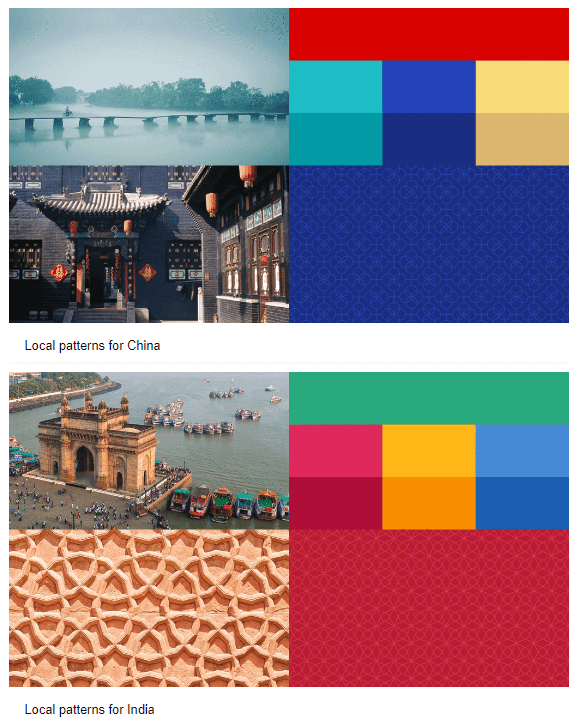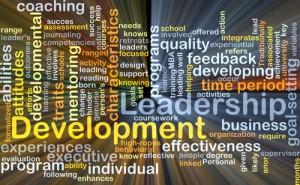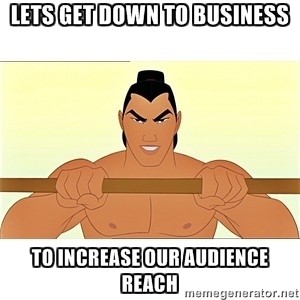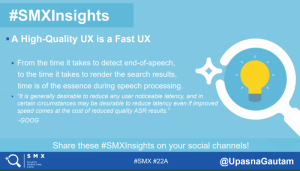How will marketing change in the coming decade? What will the agency of the future look like in 2030? Find some answers in this thought piece.
2020. It just rolls off the tongue. Two decades into the new millennia. Three decades into the digital revolution.
So much has changed in these decades. Even the most clairvoyant among us wouldn’t have been able to predict our smartphone-fueled present in the year 2000. Nor could they have predicted the changing nature of the brand, or the transformation of the agency.
As we step into another decade, it’s time to take stock again. The last 20 years have brought widespread technological and social changes.
What do the next 10 years hold in store? And more importantly, what can your agency do to keep up?
For answers, read on.
How Marketing is Changing
The relevance of any agency depends on its ability to keep pace with (and even predict) changes in marketing.
And at no time has marketing changed faster than in the last 20 years.
But if the last 20 years were about disruption, the next promise to be about consolidation. As an agency marketer, you have to look out for the following:
1. Digital is dominant
Brands have spent a good part of this millennia dancing between traditional and digital marketing. Like an errant Tarzan, they’ve tried to grab onto the digital branch without letting go of the traditional trunk.
But in 2020, it’s fair to say that digital will be the channel that truly matters in the next two decades.
The next wave of consumers – Gen Z and beyond – will be digital natives, not digital immigrants like millennials. They’ll have no memory of a time of newspapers and landlines and feature phones. The digital, to them, will be as comforting and common as Sunday morning cartoons and Seinfeld reruns were for the millennial generation and older.
We can see this change already. According to eMarketer, 2019 is the first year that digital marketing will overtake traditional in ad spending. The gulf will be so wide by 2023 that it will be twice the total traditional ad spend.

Extrapolate this to 2040 – does this future look like it will have room for print and TV ads?
2. Technology is omnipresent but fragmented
As technology has become omnipresent, it has also become cheaper. And as it has become cheaper, it has also become more fragmented.
Nothing illustrates this better than the MarTech boom of the last 10 years. As ChiefMartec’s exhaustive graphs show, this field has bloomed from a handful of players in 2011 to over 7,000 companies offering a range of tools.
This has been great for marketing organizations, of course. Technology, such as advanced automation and analytics, which was once available only to Fortune 500 companies, has now been commoditized.
But this cheap availability also means that your marketing ops are more fragmented than ever. Everything from communication to data is distributed across multiple systems, few of which talk to each other.
As the decade progresses, this fragmentation will become even more acute, even as the tech itself becomes cheaper and easier to use.
3. The idea of a ‘brand’ is changing
Branding might be a century old, but at no time has it changed as much as it has in the last decade.
Consumers today don’t just see a brand as just a product name; they see it as a store of value – the company’s, and increasingly, their own.
As one author writes in Harvard Business Review:
“Companies legally own their brand, but their most devoted customers may own it psychologically.”
Which is to say, brands are now essentially collectively owned.
This is the reason why consumers are increasingly turning to brands for identity validation. Hence, you have things like brand activism, which is effectively positioning on steroids.
This mutated, ever-evolving idea of a brand is turning marketing on its head. You now have to tie brands to identity and hope that the identity remains relevant enough to be profitable.
As two researchers write in this paper:
“Using two different experiments, the authors provide strong evidence that customers rely on brands with a desirable brand identity to express their own identity and they tend to prefer brands that are convergent with their identity as the primary means of expressing a unique image about their personal lifestyle.”
4. Global is out – “Glocal” is in
In 2019, it’s a fargone conclusion that establishing a global presence is critical. Markets are now distributed and connected; your customers can be from anywhere across the globe.
But undercutting this phenomenon is the increasing demand from consumers for experiences that are rooted in a local flavor, despite their globalness.
Sociologists have even coined a word for it – “Glocalization”.
Take Uber’s 2016 rebrand as an example. The redesign used patterns and graphical elements from each country it operates in, such that a user in India would have a different brand experience from a user in China.

Uber’s 2016 redesign maintained the same global design but utilized local elements for each of its core markets
This attempt to harmonize global and local ambitions can’t just be skin deep; everything from operations to product offerings has to factor in local demands as well.
Starbucks, for instance, reorganized its cafe layouts to suit the needs of consumers in India. Coffee is less of a commodity and more of a social occasion in India. Summarily, Starbucks added more shared seating to accommodate larger groups. It also added tea-based drinks to the menu and local snacks to cater to the different tastes of local customers.
As global markets become more interconnected, brand playbooks will have to change in the coming decade. As they enter new markets, brands have to signal that a) they’re here to stay, and b) they understand local demands.
All these developments make us ask: how should agencies react? What can you change to position your business for success in 2030?
Let’s find some answers.
How Agencies Can Respond
Market conditions have always changed and agencies have always had to respond to them.
But it wouldn’t be wrong to say that the changes in the last decade, and the changes to come in the coming one, are more profound than ever before.
Respond to these changes will take more than hiring a few extra people and changing your marketing pitch. Rather, you’ll have to alter how you work, who you work with, and even how you think of an “agency”.
As we move towards 2020 and beyond, what will the agency of the future look like?
Let’s look at some answers below.
1. Adopt for a changing role within marketing organizations
In October 2018, Ford dropped WPP as its chief advertising partner, ending a 75-year-long relationship.
In place of WPP, Ford hired BBDO as its lead global brand creative agency. It also hired Wieden & Kennedy as an innovation partner. At the same time, it retained WPP’s services for media planning, shopper marketing, and CRM.
Effectively, Ford replaced a single partner – WPP – with three separate agencies.
While this was happening, Ford also bolstered its in-house capabilities by hiring over 100 people across marketing and creative divisions.
The events at Ford highlight a development that’s been taking place at brands across the world. More and more brands are replacing their agencies with a consortium of expertise-focused partners. They are also increasingly taking creative decisions in-house – the penetration of in-house agencies has increased by 52% in the last decade.
This changing role of agencies within marketing organizations calls for a little soul searching. You have to ask: What do you really bring to the table? Are you simply a source of run-of-the-mill expertise? Or can you be a partner who can work with others to help the brand succeed?
The agency of the future will have to adopt a hands-on management approach where it acts as a brand’s internal team, and not just a “specialist shop”. The more you can embed yourself in the brand’s business, the better you can serve them (and help yourself grow).
2. Tell a better story to attract talent
The biggest battle of the 2020s will be fought not for clients, but for talent.
This might sound hyperbolic, but anyone who has struggled to find quality developers and designers will agree.
The problem is simple: marketing is increasingly tech-driven. And tech employees have a plethora of better-paying options to choose from than creative agencies. Why would Joe Programmer work in a fast-paced, high-stress agency environment when he can just clock in from 9 to 5 at Google and get lunch on the house?
The solution to this problem isn’t better salaries (though that certainly doesn’t hurt); it’s a better narrative.
For all their creativity, agencies do an awful job of telling their own stories. Potential hires often don’t know what the agency does and why it exists. Compared to the “change the world” mantra of startups that might want to hire them, this lack of storytelling is a massive impediment.
If you’re going to attract top talent, you’ll have to invest more in your story.
Tell potential hires what you do. And more importantly, why you do it. Treat your agency as you would treat a client. Give meaning to your work, and make sure to showcase it beautifully.
Your competitors are giving employees a concrete reason to work with them.
Shouldn’t you?
3. Pricing power will depend on true expertise
The agency business was already a low-capital business, but the internet has reduced this even further. A laptop and a list of leads are all it really takes to start an agency today.
While this has been great for entrepreneurs, it also means that your business gets crowded out of the market. Why should a client work with you instead of the 1,000 other agencies offering exactly the same services as you?
This is why you have to invest in expertise – true expertise.
True expertise is knowledge that can’t be learned from courses and colleges. It’s expertise that’s mastered from years of first-hand experience leading an industry or skill.
This expertise is the opposite of the “full-stack marketing” that has plagued the agency business for the last decade. When you offer to do everything for everyone, you seldom get good at anything. And your margins reflect that.
To thrive in the coming decade, you have to ditch the full-stack model and position yourself as an expert. Pick your industry, pick your expertise, and go all hands-in.
4. Technology is the answer – until it’s not
Tech expertise is often hailed as an all-curing panacea for an agency’s ills. There is a belief that if you just invest enough in technology and data, you can outcompete everyone for clients as well as talent.
But this faith in technology can be misleading. It can even undermine an agency’s purpose and effectiveness.
The truth is that no matter how good you get at it, you’ll always play second fiddle to true tech companies. You can beef up your analytics departments with data scientists, but you’ll never truly reach the effectiveness of a Google or Facebook.
So while technology is crucial for success in the coming decade, it should be seen as a crutch, not an all-purpose antidote. Use it to do what agencies do best: tell stories and express creativity. Leave the hard tech challenges to actual tech companies.
In other words, invest in technology, but use it to assist in creative work, not to replace it.
The Agency in 2030
Sitting at the end of 2019, it’s hard to predict what 2030 might look like. At a similar point a decade earlier, no one could have accurately predicted our current smartphone-obsessed lives.
But certain things can be said with some degree of truth: that technology will continue to play an important role in people’s lives, that brands will continue to change in meaning and value, and that agencies will have to focus on expertise to thrive.
You can’t always predict the future, but you can prepare for it.
Digital & Social Articles on Business 2 Community
(74)
Report Post





